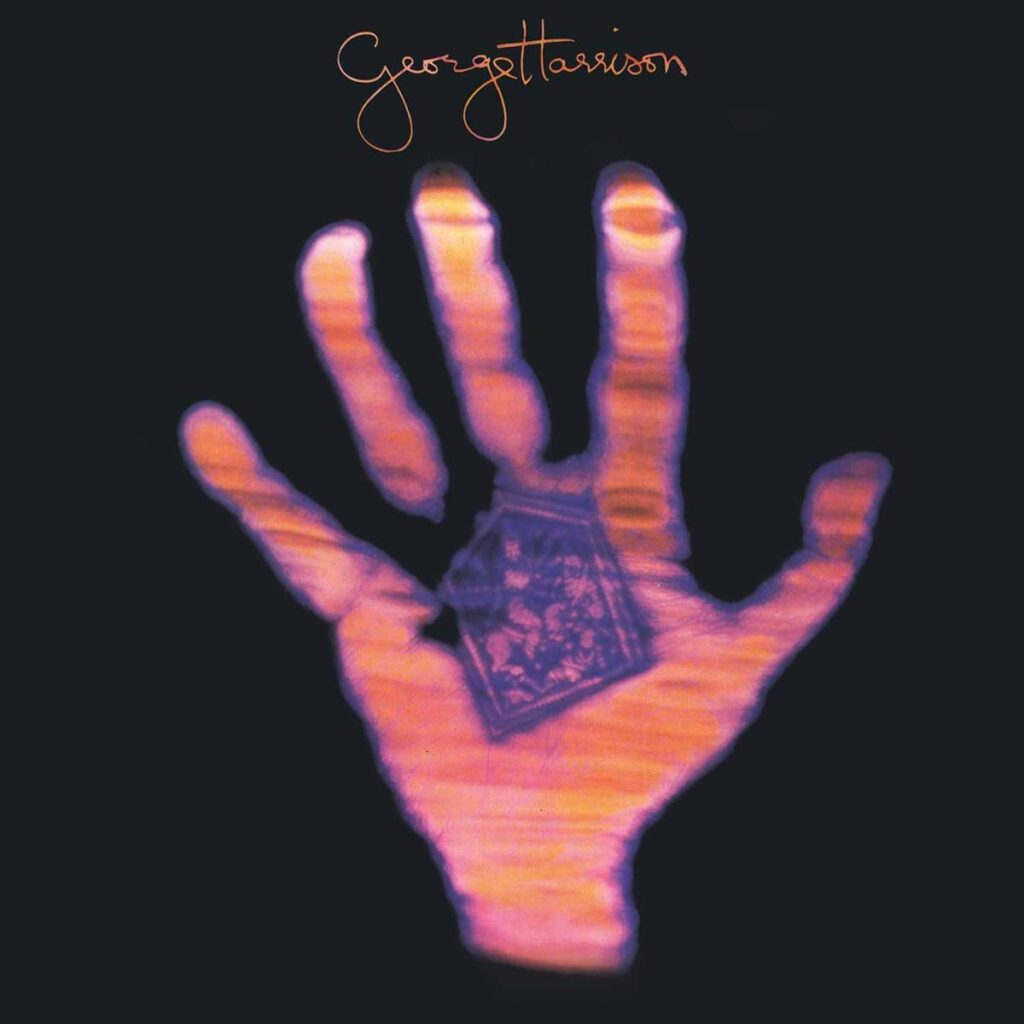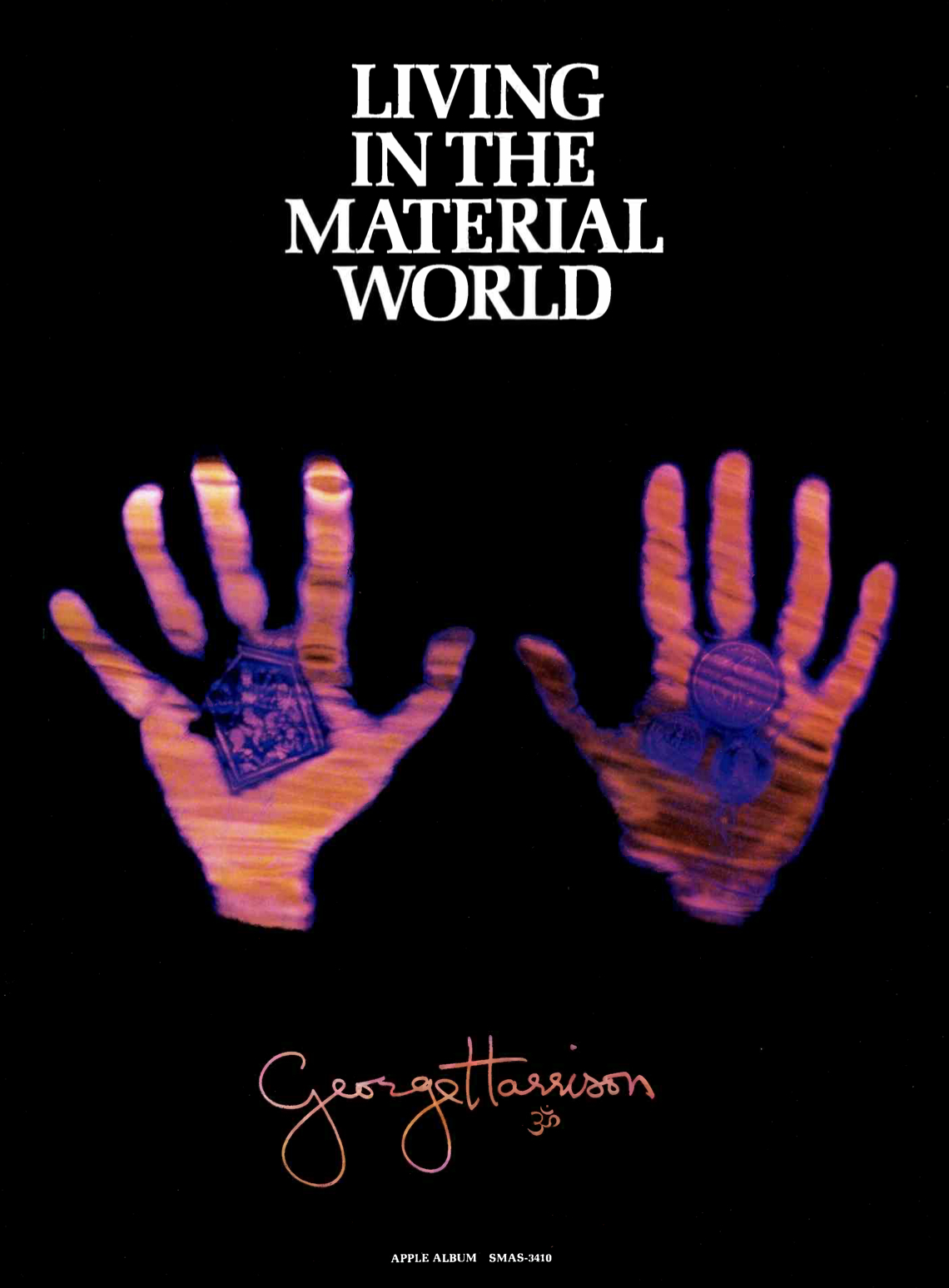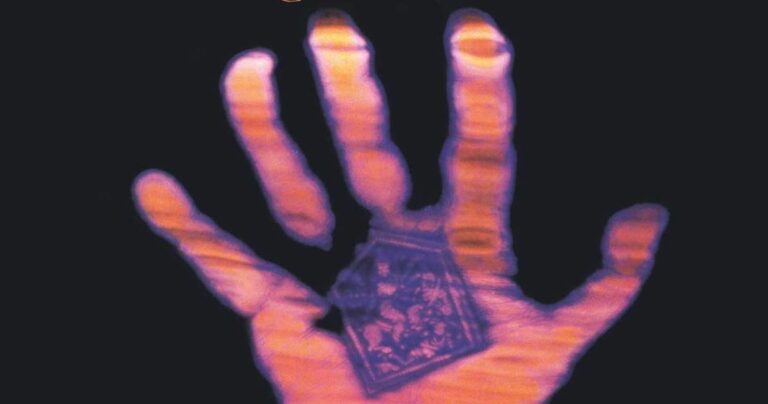 When viewed in the oeuvre of George Harrison’s early catalog, his fourth official studio album, Living in the Material World, comes as a breath of fresh air amidst the colossal release of his 3-LP All Things Must Pass and the charity fundraiser The Concert for Bangladesh. Harrison, being his usual blunt self, told Record Mirror in April 1972 during his time away from the industry, “I wouldn’t really care if no one ever heard of me again. I just want to play and make records and work on musical ideas.”
When viewed in the oeuvre of George Harrison’s early catalog, his fourth official studio album, Living in the Material World, comes as a breath of fresh air amidst the colossal release of his 3-LP All Things Must Pass and the charity fundraiser The Concert for Bangladesh. Harrison, being his usual blunt self, told Record Mirror in April 1972 during his time away from the industry, “I wouldn’t really care if no one ever heard of me again. I just want to play and make records and work on musical ideas.”
Released on May 30, 1973, it came as a creative trifecta within the albums released by his former bandmates in the past year and a half: John Lennon’s Sometime in New York City and Wings’ Wild Life. Both of those efforts were critically lambasted by the music press and did nothing to heal the rift caused by the lawsuit brought on by McCartney to dissolve the band’s partnership with Allen Klein.
Harrison took that time span to indulge in his fervent passion for Hindu spirituality, raucous recording sessions with Harry Nilsson and Bobby Keys and high-speed driving, which resulted in a crash with his wife Patti Boyd. The last incident was not without subtext, owing to strife within the marriage, mostly of Harrison’s doing. But it was after a lone driving holiday in Europe, chanting Hare Krishna nonstop, that he was ready to record Living in the Material World.
Related: Our Album Rewind of All Things Must Pass
The bulk of the original 11 tracks were recorded with his tight-knit group of collaborators, including Gary Wright, Nicky Hopkins, Jim Keltner, Klaus Voormann and Ringo Starr (when he could get time away from his movie schedule) at both Apple Studios and Harrison’s Friar Park estate FPSHOT. While Harrison completed the project as sole producer, he gave credit to Phil Spector for “Try Some, Buy Some” and had intended this to be a Spector album. But as Harrison related in Elliot J. Huntley’s Mystical One: George Harrison After The Break-Up of the Beatles, Spector—either drunk or zonked out on pills—was in no condition to help.

The album artwork was a visual gateway for the listener as they perused the sleeve at the record bin. Prominently featuring a Kirlian photograph of Harrison’s hand with a Hindu medallion (and the back cover with quarters and a silver dollar), one could see how firmly entrenched he had become with bestowing his message, printed not so subtlety at the very bottom of the reveresse ide: All Glories to Sri Krsna.
The lead-off track (and single), “Give Me Love (Give Me Peace On Earth),” was signature Harrison with a strumming acoustic guitar, laid-back beat and a honey-drip slide guitar solo. However, unlike his previous releases, there was an indication in the lyrics and delivery that signaled his distaste for business and people as he soared for a higher meaning.
“Sue Me, Sue You Blues” was a direct and sardonic statement on the state of affairs within the Beatles and Allen Klein’s saga of who-did-what-to-whom. If not for the honky-tonk vibe and Harrison’s Spector-ish sparkly vocals attached to the tune, it could have well joined Lennon’s “How Do You Sleep?” (which Harrison contributed to) in a perfect blend of brutal, unflinching honesty.
“The Light That Has Lighted the World,” “Don’t Let Me Wait Too Long” and “Who Can See It” are based around the familiar territory of soft, rolling landscapes blessed by celestial sunlight. By any other artist, these would be considered one long hymnal, interspersed with Harrison’s stellar guitar work and the unmatched musicality of the rest of the team. However, in retrospect, the radiance expounded tends to lull the listener into a semi-unconscious state.
The title track is the longest cut on the album and benefits from the jam-style, galloping up and down melody and the keyboard work of the undisputed and unsung Nicky Hopkins. Supplied with what the late writer Nicholas Schaffner correctly dubbed a “chewy horn section” and stinging guitar from Harrison, it nonetheless suffers from the repetition of him singing “living in the material world” more than it needs to.
The remainder of the album is a pleasant jaunt through territory highly familiar to Harrison: “The Lord Loves the One (That Loves the Lord),” “Be Here Now,” “The Day the World Gets ’Round” and the album’s closer “That Is All.” A revisit to a song he bequeathed to Ronnie Spector, “Try Some, Buy Some,” is brought back with the original Phil Spector “Wall of Sound” treatment he imparted. A commercial failure, Harrison reused the instrumental track, recorded his vocal and included it on the album.
The critics of the times, especially New Musical Express’ Tony Tyler, minced no words: “It’s [also] breathtakingly unoriginal and—lyrically at least—turgid, repetitive and so damn holy I could scream.” Robert Christgau from Creem graded it a C, with a pithy “If you call this loving. Harrison sings as if he’s doing sitar impressions.”
None of these words failed in terms of album sales and chart position when the LP was released. Living in the Material World became Harrison’s second #1 album in the U.S. [as did “Give Me Love (Give Me Peace on Earth)”] and #2 on the U.K.’s Official Charts. Retrospective criticism has been kinder to the narrative, with several writers praising the album as “underrated,” “exceptionally fine” and “[Harrison’s] melodies are so superb they take care of everything.” Granted, when viewed next to his previous gargantuan offerings, Living in the Material World came in with quiet undertones and proceeded to exit with nary a thought, gathering gold album status, while the publishing royalties were donated to the Material World Charitable Foundation.
The album was reissued in 2006 with two B-sides, “Deep Blue” and “Miss O’Dell,” and again in 2014 with both B-sides and the addition of 1971’s “Bangla Desh” as part of the Harrison boxed set The Apple Years 1968–75. It’s available, along with other Harrison recordings, in the U.S. here and in the U.K. here.


2 Comments
I recall a particularly trenchant letter in the Rolling Stone magazine letters column that went something like this:
“What does George Harrison mean when he sings ‘Help me cope with this heavy load’? Does he have too much money? If so, I’ll gladly take it off his hands.”
“THAT IS ALL” is my favorite song on the album and in the top 5 of my all-time harrison songs.